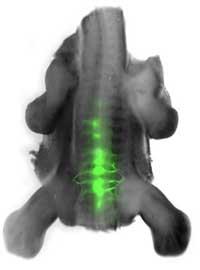Recipe for transforming stem cells into motor neurons
Now, according to a study published in the scientific journal Cell, an encouraging solution has been found. Apparently, researchers from Columbia University (USA) have invented the precise molecular mix to convert stem cells into motor neurons. In addition, after the integration of the motor neurons obtained with the help of this mixture in the embryo marrow of the chickens, they have seen that they develop jointly with others and that they fulfill their work.

These stem cells belonged mainly to research mice. These mice produced a fluorescent protein in the neurone engines, which allowed the follow-up of the results of the research. Stem cells grew to form the embryo of 1000 cells. Subsequently, to lead to the history of motor neurons, they moistened in retinoic acid. Later, to become the motor cell of the spinal cord, the sonic hedgehog protein was added. Finally, 20-30% of the cells became a fluorescent history of motor neurons.
In the next step, these antecedents were separated and introduced into the spinal cord of the embryos of the chickens. There they received reproduction signals. Three days later, fluorescent neurons grew and sent extensions of the spinal cord to the muscles. Thus, the researchers demonstrated that stem cells can become motor neurons if they are treated as a growing animal.
They consider that a similar methodology can be used in humans to regenerate the nervous tissue lost by lesions or diseases.
Buletina
Bidali zure helbide elektronikoa eta jaso asteroko buletina zure sarrera-ontzian











